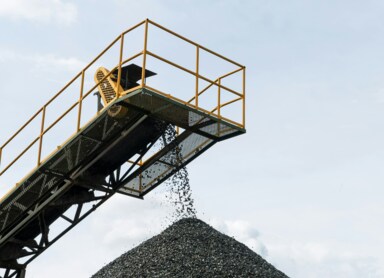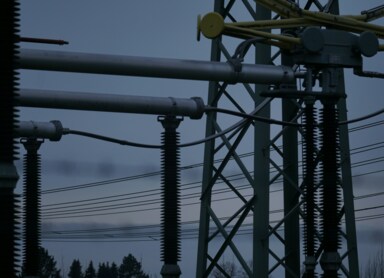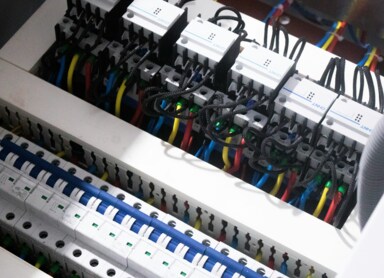What is green hydrogen and how is it created?
The European Union's climate protection policy over the past years has become one of the key elements around whose development the Community is focused. One of the strategies is to obtain so-called green hydrogen through Renewable Energy Sources (RES). Is this really an effective way to meet energy demand? What is green hydrogen and how is it created?
Green hydrogen - what is it and what is its significance?
Hydrogen is one of the most common elements in the world. It is found in water and hydrocarbons and is increasingly being seen as an alternative to conventional energy sources. It has a high energy value and can be used not only as a source of energy, but also as an energy store.
Current technologies allow hydrogen to be extracted in many different ways1. Conventional hydrogen (defined as gray) is obtained from non-renewable fuels by:
- natural gas reforming;
- coal seam gasification;
- separation from coke oven gas.
Although energy-efficient, gray hydrogen has a very high carbon footprint and negative environmental impact.
In addition to gray hydrogen, blue hydrogen, which is formed from non-renewable but low-carbon sources, is also distinguished. Its production uses technologies such as steam reforming of hydrocarbons with Carbon Capture and Storage (CCS), coal gasification with CCS, or electrolysis using eclectic energy from traditional sources - coal - with CCS, among others.
Finally, there is also green hydrogen. It is the greenest of all types of synthetically produced element, since only renewable energy sources are used to produce it. As a result, its resources are unlimited, and its production does not affect the environment and does not lead to air pollution.
Green hydrogen how it is created - production processes and technologies
In order for green hydrogen to be created, it is necessary to involve processes that use renewable energy. The literature2 points to two technologies that serve this purpose:
- hydrogen production from biomass;
- hydrogen production by electrolysis.
Production of hydrogen from biomass involves gasifying biological waste, such as grass or straw. The resulting mixture can be converted into hydrogen by means of steam reforming. In addition to the desired hydrogen, the process produces residual gases that can be used to power electrical appliances by placing the mixture in a gas turbine. An equally eco-friendly process involves extracting hydrogen through photosynthesis from algae and other microorganisms. In practice, however, only electrolysis is suitable for use on an industrial scale, as there is currently no infrastructure to produce biomethane in large quantities.
How then does an electrolyzer work to extract hydrogen? In a device referred to as an electrolyzer, water is broken down into hydrogen and oxygen. The hydrogen moves to the negatively charged pole, while the oxygen moves to the positive pole. Depending on the type of electrolysis, either an alkaline electrolyte in the form of a solution of water and potassium hydroxide or a PEM (Proton Exchange Membrane) is used. To make the whole technology green, the electrolyzer must be powered by renewable energy from the sun (photovoltaics) or wind power (wind turbines).
Green hydrogen in Poland - current status and development prospects
Unfortunately, at present, only about 5% of the world's total hydrogen production is “colored” green. The overwhelming majority of this energy is gray hydrogen, and therefore not green. However, this does not mean that over the next several years or so this proportion will not change. There are already many initiatives underway in Poland to implement green hydrogen into everyday life.
It is worth noting, for example, the Hydrogen Technologies Cluster (the coordinator's headquarters are located in Gdansk) working on the use of green hydrogen in transportation, or the Noble Tank project assuming the production of pressure tanks for storing hydrogen. That's not all, however.
The NeptHyne project is an offshore wind power plant to produce hydrogen for power generation and ship power. Yet another initiative is IPCEI BlackHorse (a project of Poland, Slovakia and Hungary), which involves, among other things, the construction of 270 hydrogen refueling stations in the area of the Trans-European Transport Network or the production of 40 electrolyzers that will produce green fuel.
Also noteworthy is the Hydrogen Eagle project, in which PKN Orlen is participating. It assumes the construction of 9 low-emission hydrogen hubs in Poland, the Czech Republic and Slovakia operating on the basis of renewable energy. These are to be entire infrastructure centers dedicated to the production and distribution of hydrogen energy. PKN Orlen is to use its Baltic Power offshore wind farm, which will begin construction later this year, for this purpose. Among the smaller successes worth mentioning:
- the launch of hydrogen buses in Swidnik in cooperation with PAK-PCE, and the purchase of a flight of hydrogen buses in Poznan;
- the establishment of a network of H2 PAK-PCE hydrogen charging stations. 30 stations are to be deployed in major Polish cities;
- commissioning of the first hydrogen locomotive in cooperation with PESA and PKN Orlen plants.
Of course, these are just examples, but they illustrate that the development of hydrogen technology is ongoing and is being implemented both top-down with national energy security in mind, and bottom-up, at the level of individual local government units. A company that enters this race has much to gain!
Green hydrogen from RES in Poland - potential and challenges
The potential lying in green hydrogen is enormous and will be felt on many levels. Countries that implement these technologies in their power generation will meet EU requirements for environmental protection and sustainable development. In turn, companies using green hydrogen-based solutions will lower the cost of obtaining electricity, lay a milestone for their ESG strategy. They will also stabilize their image as a reliable and responsible market participant and business partner.
The deployment of hydrogen technologies involves a whole range of challenges that manufacturers, suppliers and users alike must deal with. Examples of problems include3:
- availability of materials necessary for electrolyzer production (including platinum and iridium);
- optimizing the production capacity of electrolyzers so that they are able to meet market needs;
- coordinating with each other the development of the various elements of the infrastructure - after all, why produce hydrogen if there will be a shortage of vehicles that use it?
- refining the various components of hydrogen technology so that they are fully safe for commercial use.
It will certainly be a long time before hydrogen can be refueled at every station in Poland, and even longer before such vehicles appear in every household. Nonetheless, the development of technologies for obtaining and using green hydrogen creates a whole new outlook for rapidly growing companies that want to rely on renewable energy.
1. Zielony wodór z OZE w Polsce. Wykorzystanie energetyki wiatrowej i PV do produkcji zielonego wodoru jako szansa na realizację założeń Polityki Klimatyczno-Energetycznej UE w Polsce; Dolnośląski Instytut Studiów Energetycznych 2021 http://psew.pl/wp-content/uploads/2021/12/Raport-Zielony-Wodor-z-OZE-77MB.pdf dostęp: 10.07.2024 r
2. Jureczka Sz. i in.; Wodór. Informacje i właściwości. Paliwa przyszłości; Eunomia 1 (104)/2023.
3. Polski Wodór. Zdążymy na czas? 4CF The Futures Literacy Company https://4cf.pl/wp-content/uploads/pdf/4cf_raport_wodor.pdf; dostęp: 10.07.2024 r.






